100 years ago, a Fall River soccer legend was born. History almost forgot the Marksmen.
FALL RIVER — When Derek Goncalves was a teenager, he and his friends would spend their days kicking a soccer ball around a field off Shove Street in Tiverton. It was a mostly abandoned plot except for the Ponta Delgada Club nearby, perfect for getting in some practice — but it was private property, and they weren't there with permission.
“One day it got locked up,” Goncalves said. “They put up a fence — it said ‘No trespassing.’”
He went back home in Fall River and, being curious, randomly searched the internet for information about that area. He discovered that he and his friends had been playing on hallowed ground.
That field had once been the home of the Fall River Marksmen, the site of Mark’s Stadium — both legendary in the world of U.S. professional soccer. To this day, it’s still considered one of the best soccer teams that has ever existed in America, bred multiple Hall of Famers and World Cup champions, with a historic stadium that outdrew the Boston Red Sox in its time. No trace of this had been left. And despite having lived in Fall River his whole life and being a soccer fan, it was the first Goncalves had heard of it.
“I had no idea,” he said. “I had zero clue.”
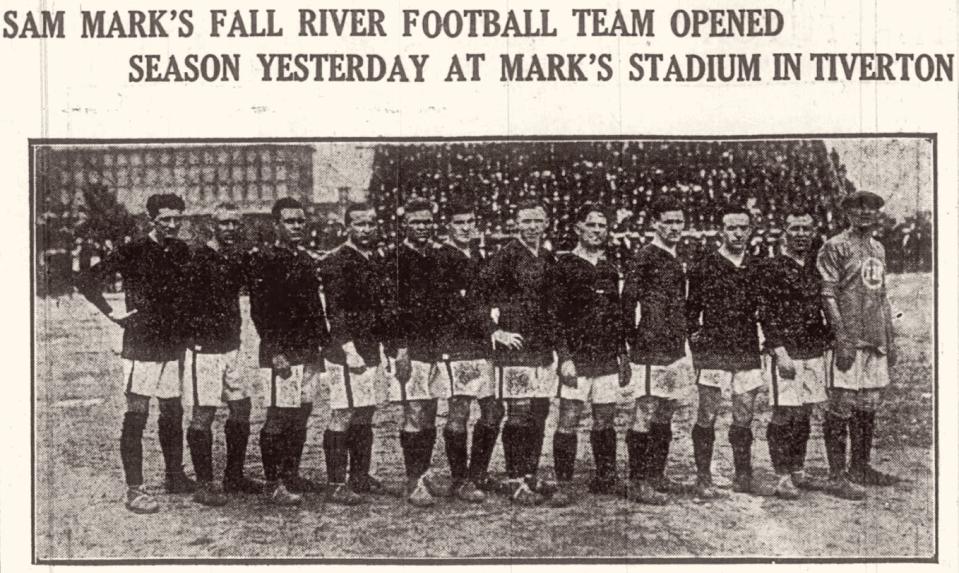
Fun for the whole family: Dartmouth's Lincoln Park was a summer hotspot — but why did it close?
Soccer's links to the Spindle City
Exactly 100 years ago, the Marksmen soccer team, as history knows it, was born.
While these days pro soccer struggles to gain attention in the United States, the sports world looked much different in the 1920s. The NFL barely existed and American football was a sport primarily played at the high school and college levels. Not far behind baseball, soccer was one of the most popular sports, especially on the East Coast.
“When I say it was big,” Goncalves said, “I mean whole front pages on the Boston Globe, New York Times dedicated to their soccer teams’ accomplishments.”
As cities became more industrialized, European workers immigrated to work in factories and brought with them their love of the game — men from England, Ireland and Scotland to Massachusetts, and from central Europe to New York, New Jersey and Chicago. Pro soccer teams here and in the Midwest would spring up sponsored by companies with enough guys willing to put together a team.
“The success of soccer in New England, it’s always related to the textile business. The textile business brought in the players,” Goncalves said.
As one of the world’s textile leaders and a magnet for immigrants, Fall River had several semi-pro soccer teams, including the Pan-Americans, the East Ends, the Olympics, and the most successful of them, the Fall River Rovers. In 1921, the pro-level American Soccer League was formed, and created a new team — Fall River Football Club, which struggled in its first season.
The next year, 1922, Sam Mark took over the team. He would lend the team his name, build them a stadium, and make Fall River a soccer sensation.
Anchors aweigh: The Battleship joined the Navy 80 years ago. Why is it in Fall River?
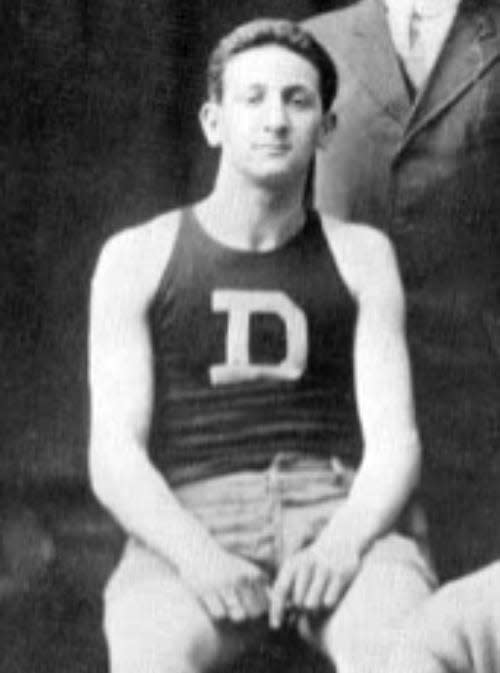
How Sam Mark built a world-class soccer team
Samuel Markelevitch’s family immigrated to Fall River from the Kyiv, Ukraine, area. His father, Mandel, was a toymaker — and like many immigrant families at the time, he Americanized their family name to Mark.
“The family became a prominent business family in Fall River,” Goncalves said. “So prominent that they bought Lizzie Borden’s house [at 231 Second St.] and used it for 20 years as a toy store. … The first floor, [Mandel] would use it as a window shop so kids could see the toys that he would make.”
Sam was an athlete, a standout basketball, football and baseball player at B.M.C. Durfee High School. He graduated from Durfee Tech with a degree in business and became a local sports promoter, involved with boxing from Corky Row to New Bedford.
In 1922, when the American Soccer League needed someone to turn around Fall River F.C., Mark took the opportunity. On July 22, 2022, the league gave Mark control of the franchise, and he set to work rebuilding the team. He knew little about soccer, but he knew an athlete when he saw one, scouting players from up and down the East Coast, from Canada, and the United Kingdom.
Fall River meets fiction: 'The Moonlight Club' shines light on addiction struggles
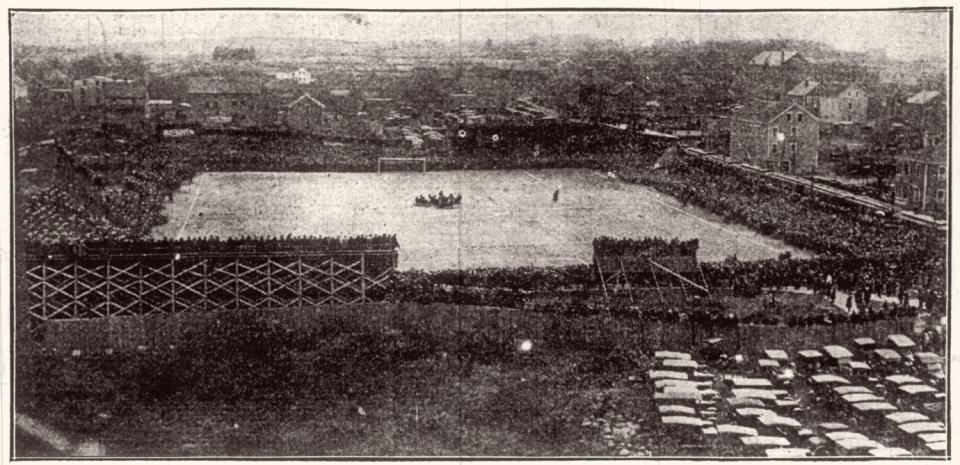
“At first, they were called Fall River Football Club, but because everybody knew Sam Mark as someone who was going to do everything possible to have the best team, they called them 'Mark’s Men.' So then you drop the apostrophe and it’s Marksmen," Goncalves said. “And that’s how the moniker came.”
Mark also knew he had to sell tickets to games — but under the Massachusetts “blue laws,” the Marksmen couldn’t play on Sundays. Rhode Island had no such law, Tiverton was right down the road, and there was some acreage on Shove Street.
House in a box: Did Sears Roebuck sell do-it-yourself kit homes by mail in Fall River?
“He negotiated with the Shove Mills. They gave him a giant lot of land, and he started building a stadium literally a week after he was granted control of the franchise,” Goncalves said.
Mark’s Stadium, as it came to be named, seated 15,000 people, and is believed to be the first stadium built specifically for soccer in the United States. Like so many earlier teams, the Marksmen played soccer in the shadow of the mills.
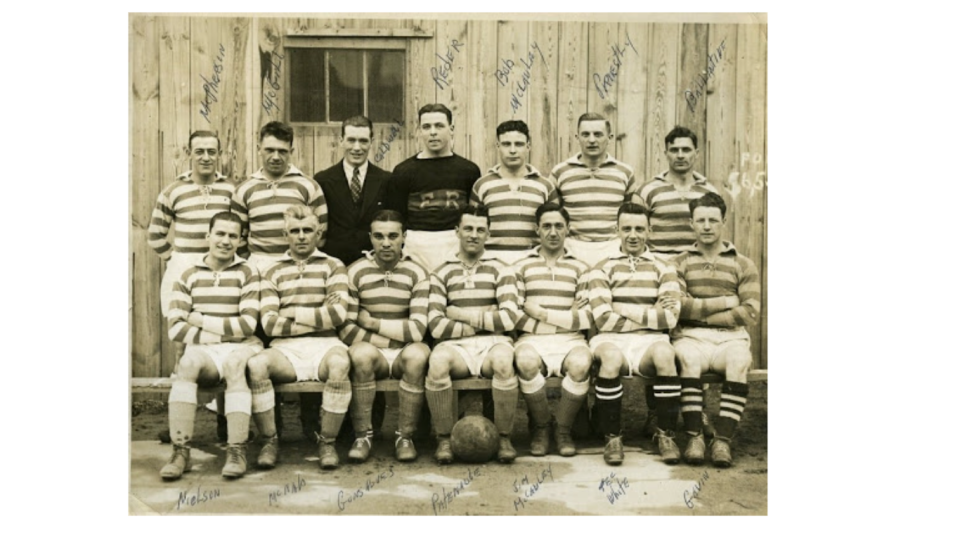
The Marksmen's golden age and its quick end
The Marksmen’s exploits are legendary in soccer history. The team Mark built won three straight league titles starting in 1923. They won the National Challenge Cup in 1924, effectively making them national champions, and only lost three games in their 1924-25 season — “even exhibitions,” Goncalves said. “That’s how good they were.”
They dominated American soccer, packing Mark’s Stadium with fans and nurturing players like Bill McPherson who set records that stood for decades. Abroad, the Marksmen were known as the American Menace, and sent multiple players to the U.S. national team to play in the 1930 World Cup. Fall River hometown hero Bert Patenaude became the first player to score three goals in a World Cup game — the first hat-trick. He and future hall-of-famer Billy Gonsalves became key players on the national team, and at home. In 1930, the two led the Marksmen to win three national championship titles in the same calendar year.
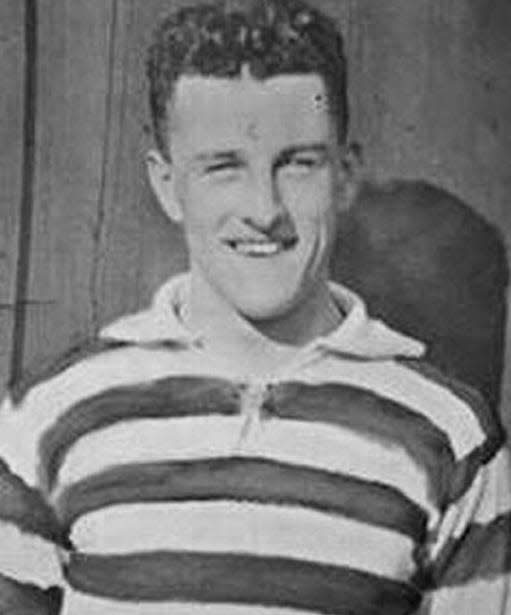
Fall River strong: From Rhodes scholars to MMA fighters, 10 notable city natives
“They’re both huge personalities in the city, Billy with the Portuguese and Bert with the French," Goncalves said. “But they were very good friends while playing for Fall River and with the United States national team."
Yet at the height of the team’s powers, their reign collapsed. In 1931, Mark relocated the team to New York and renamed them the Yankees — a brief, unsuccessful gamble before Mark took the team to New Bedford. But the Great Depression had sent the national economy down the tubes and with it the game of soccer. The league folded a few years later.
American soccer’s golden age was over due to a mix of declining attendance from the Depression, and what Goncalves described as league and pay disputes, and a healthy dose of jingoism.
“That was a misconception that … this is an immigrant sport, it’s not American,” Goncalves said. “It made it look like the foreign, imported players wanted more money, and that killed the league." The vacuum allowed other, more “American” sports like football to gain popularity. “I think if the Great Depression hadn’t happened, I think soccer would be the No. 2 sport right now in the U.S.”
Mark gave up promoting soccer and owned a nightclub. Mark’s Stadium was used by other soccer clubs, including Ponta Delgada F.C., until the 1950s, when it was torn down to make way for a drive-in theater — which itself was torn down in the 1980s when drive-ins fell out of fashion. The field, where Goncalves and his friends would later play pick-up games, became forgotten, and so did the team.
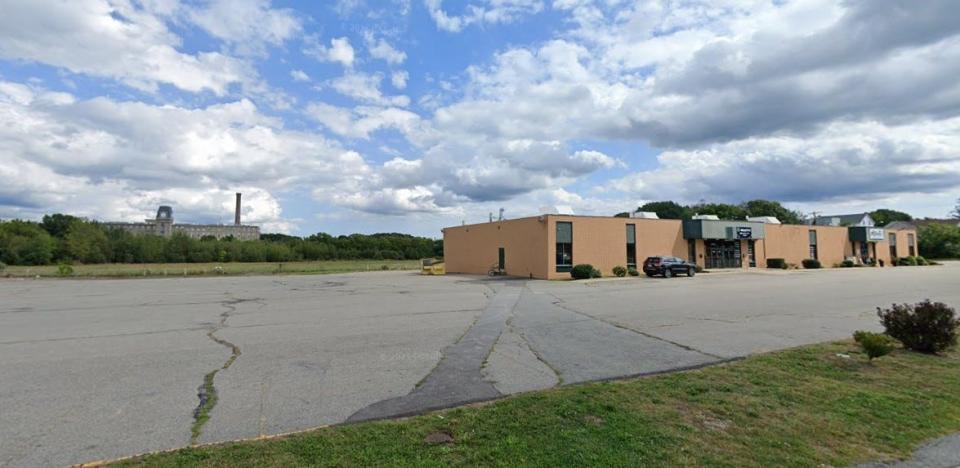
The team's revival
Goncalves has a day job as a licensed mental health therapist, but he spends his free time researching the team, combing through microfilm for any bit of information he can get on the team.
The Marksmen were revived in 2019 by president André Ruette as an amateur team with a plan to work its way back to the pros, and a strong connection to the city.
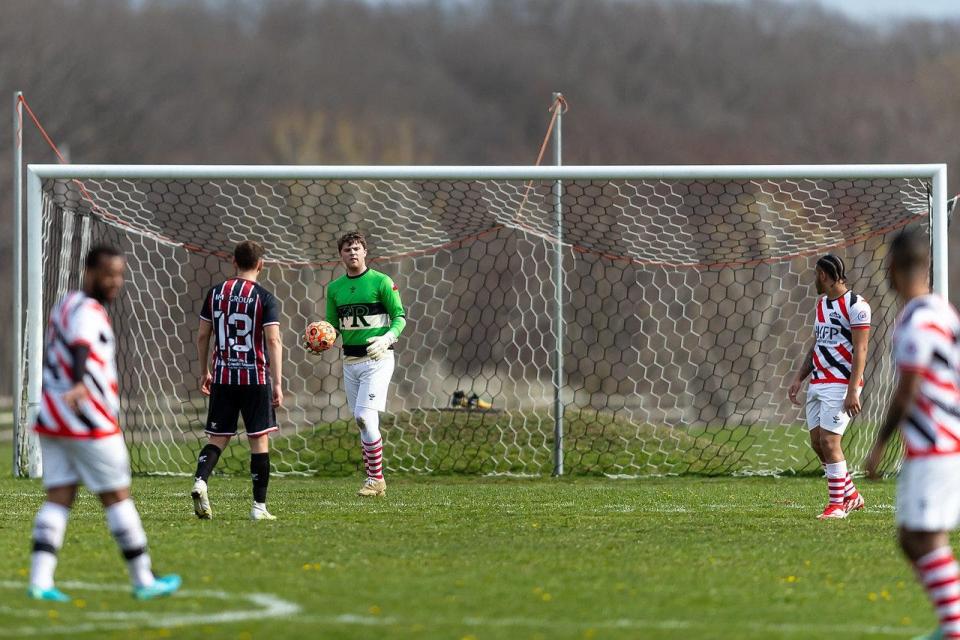
“The Marksmen were an institution of soccer not only for some of the world’s best players but also a breeding ground for local players to shine brightly, an aspect in which we hope we can continue through our efforts with our revival of the club,” Ruette said. “Fall River is a special place for many reasons, but thanks in part to the Marksmen, it's a community synonymous with world-class soccer and I hope we can continue to carry that torch and further cement Fall River’s legacy as the true home of U.S. soccer.”
Goncalves works with them as the “team historian" — he’s taken the Twitter username @marksmenhistory, and has authored multiple articles on the team, including one on its 100th birthday for the Society for American Soccer History. The article is a thoroughly researched history into the team’s golden years, which at least locally have gone sadly unremembered.
"I find that to be amazing, that that’s pretty much forgotten, not acknowledged," Goncalves said. “We're recognizing it. We’re bringing it back to the light, because if we didn’t do it, the people of Fall River wouldn’t know what they had.”
Dan Medeiros can be reached at dmedeiros@heraldnews.com. Support local journalism by purchasing a digital or print subscription to The Herald News today.
This article originally appeared on The Herald News: Fall River Marksmen soccer team turns 100 years old

